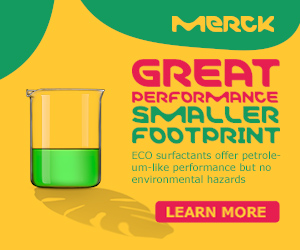Nutraceuticals
Exploring Nutraceutical Trends and Challenges: A Conversation with Sirio’s Sara Lesina 24th November 2023

CPHI, the world’s largest pharmaceutical gathering held in Barcelona from October 24th to 26th, 2023, showcased several notable pharma trends. To delve deeper into the realm of emerging Nutraceuticals, we had the opportunity to sit down with Sara Lesina (SL), General Manager of Sirio (EU & AMERICAS), for this exclusive interview, to gain insights into the dynamic landscape of the nutraceutical industry, the challenges it faces, and the vision for Sirio Pharmaceuticals.
To learn more about the pharma trends to watch out for next year and the outlook of the CDMO industry in 2024, please read the CPHI Annual Report 2023, where Sara has also contributed an article titled, ‘Nutraceuticals, personal Care, and pharma converging over the next 5 years as the biology of health & wellness science accelerates’.
Q: Sirio is deeply engaged in the production of nutraceuticals, and you’re launching at CPHI 2023 gummies for cough and cold, oral care, urinary tract infections. Could you elaborate on the benefits that gummies offer over traditional dosage forms? And what are the specific challenges?
 SL: “In terms of opportunities and advantages, I would say, first and foremost, gummies have a convenience and indulgence factor, which other more traditional dosage forms, like for example tablets or capsules, don’t have. These conventional forms are ingrained habits, not pleasurable moments, wouldn’t you agree? When we venture into the realm of nutraceutical supplements, we’re talking about a moment of well-being, a little treat that’s good for you. Additionally, gummies have a lot more versatility in terms of sensory profile, organoleptic, texture, flavour, shape, colour.
SL: “In terms of opportunities and advantages, I would say, first and foremost, gummies have a convenience and indulgence factor, which other more traditional dosage forms, like for example tablets or capsules, don’t have. These conventional forms are ingrained habits, not pleasurable moments, wouldn’t you agree? When we venture into the realm of nutraceutical supplements, we’re talking about a moment of well-being, a little treat that’s good for you. Additionally, gummies have a lot more versatility in terms of sensory profile, organoleptic, texture, flavour, shape, colour.
The gummy that we’re launching for the cough and cold is the first to market ever. They have a gelatine shell with a semi-viscous honey inclusion, bestowing it with a truly unique sensory element. It’s packed with mint and eucalyptus to soothe your sore throat and help with coughing. That’s a clear advantage over a capsule or a tablet or a powder, because you cannot really play a lot with the sensory aspect.
Consider, if you will, the distinct advantage this presents, particularly for specific consumer segments like children or those grappling with dysphagia because they are maybe even sceptical about taking something that needs to be swallowed. Gummies are also a compelling choice for individuals experiencing pill fatigue, as it provides an extra incentive to stick to their supplement regimen.
These are the primary advantages, but it’s only fair to acknowledge that producing nutraceutical gummies comes with its own set of challenges. It’s not a straightforward process. You need to include an active or multiple actives. These actives are often sensitive to moisture, temperature, pH and they must remain stable throughout the product’s shelf life. Moreover, you need to master the art of taste masking, especially with supplements like omega 3, which are notorious for their lingering aftertaste. Overcoming these technical and sensory hurdles requires a significant depth of expertise, it takes quite a lot of technical R&D know-how to overcome those. This, I would argue, is Sirio’s forte.”
Q: Speaking of your R&D team, I’ve come across the fact that you employ, if I’m not mistaken, three flavourists in-house. That’s quite noteworthy, as it’s not something you see every day.
SL: “Absolutely, when I came across that detail, my initial reaction was one of surprise. It’s not something you typically associate with a CDMO in this sector. My background lies in the food industry, where dealing with flavours is a standard practice. Of course, in the beauty and fragrance sector, this is a common practice. For a CDMO, which essentially involves manufacturing on behalf of our clients, it was a novel concept for me when I joined Sirio. I’m very proud of it. It’s the people, once again, that make all the difference. That’s why I emphasize the expertise we have in-house. These individuals are true specialists in their respective domains, and we all converge when it’s time to formulate something. It’s a collective effort, spanning manufacturing, R&D, and, crucially, the sensory dimension.”
Q: In addition to the launch of cough and cold gummies, you’re also introducing soft gels for menopause and eye health. Could you shed some light on what motivated the decision to focus on these specific demographics? What, in your opinion, are the concerns or needs of these customer groups?
SL “I’ll start with the menopause concept, which falls under the broad category of women’s health. This category is experiencing significant growth, particularly in Western markets like Europe and the United States. There’s a noticeable increase in awareness and a willingness to openly discuss about it. From a medical perspective, healthcare professionals are paying closer attention to these symptoms because they are very real and impactful for women. Therefore, there’s a growing amount, I would say, of supplements that are being launched onto the market to target those symptoms. Now, regarding our formulation, we’ve fine-tuned it quite some time ago. It consists of 500 milligrams of evening primrose oil with 45mg of gamma linolenic acid, which means taking just two capsules a day to meet the recommended dosage. Another noteworthy aspect of this concept is the capsule shell, which is entirely plant-based. This not only aligns with sustainability goals but also brings technical advantages. Our formulation uses gel and gum rather than carrageenan, resulting in better clarity, enhanced shine, and reduced hygroscopic properties.
While we haven’t conducted a clinical trial yet to test the combination of these two compounds together (primrose oil and gamma-linolenic acid) it’s a work in progress. The synergy between these compounds is notable. Gamma-linolenic acid plays a vital role as an anti-inflammatory agent. It has an impact on the hormonal aspects of menopausal symptoms, which can also make it a valuable ally in addressing PMS. In fact, it could potentially be repurposed as a product for PMS.
Now, as for the other soft gel we’re introducing, it’s designed for eye health, though it’s gelatine-based for the time being, not vegetarian. The rationale behind this launch is quite simple: whether we admit it or not, most of us spend 8 to 10 hours a day in front of screens, especially when working from home. It’s a daunting reality. As you’re aware, blue light emitted from screens can harm your eye health, particularly affecting the macula. This particular formulation should help you prevent or mitigate some of these effects. While it’s not a complete shield, being a supplement, it does contribute to maintaining healthy eyes and counteracting the impact of blue light.
Q: What are the key factors and considerations that have led to the adoption of vegan and vegetarian approaches?
SL: The vegan and vegetarian approach has been in existence for quite some time, and it has gained traction across various sectors, including the food industry. Furthermore, there are dietary and religious considerations that contribute to it. Consequently, there’s a growing number of consumers who are highly conscious of their dietary choices, even when it comes to taking supplements or medications. It’s essential to ensure that we can effectively serve this segment of consumers, so they don’t feel excluded.
However, this shift comes with its challenges. Gelatine is a well-established and widely recognized polymer, making it familiar and easy to work with. In contrast, vegetarian alternatives offer a multitude of formulations, each presenting its unique challenges. Our Plant Equity range at Sirio primarily consists of two different formulations. One is based on carrageenan, a texture derived from seaweed. About a year and a half ago, we introduced the second generation, which is based on gel and gum.
There were two main reasons for this change. Firstly, carrageenan has faced some unfounded bias or stigma in certain markets, which, while not scientifically proven, is still a concern for consumers. Additionally, there are sustainability issues with carrageenan, as it depends on the harvest of seaweed, which is seasonal and can impact the environment. On the other hand, gel and gum are fermented ingredients that can be controlled in a lab setting, eliminating the need for harvesting and reducing environmental impact.
The second reason is that gel and gum offer technical advantages, such as improved glide performance, aerosol properties, and a pleasing appearance.”
Q: I’ve been delving into the definition of “Nutraceuticals”, and the one that resonates with me the most describes them as products derived from food sources that provide health benefits. Do you agree with this definition? Given that nutraceuticals have blurred the line between health and nutrition, do you see an opportunity for specialized laboratories in these fields to collaborate and share their expertise for mutual advantage?
SL: “I never thought about it that way, but it makes a lot of sense. These are labelled as food supplements. To provide some context, my background is in the food ingredients industry from years ago, and I’ve noticed that much of the technology and expertise in this field have been influential.
There’s also a significant pharma component, particularly concerning quality assurance, quality control, and process monitoring during manufacturing. Much of that has its roots in the pharmaceutical industry. However, the core of formulation primarily originates from the food industry. When you think about it, supplements are essentially dietary complements. In an ideal world, we should obtain all the necessary nutrients in a balanced manner from our regular diet. Therefore, harnessing the power of a diet, the strength of natural elements, and transforming it into a consumable dosage form is significant. Of course, this varies based on the specific supplement. Supplements serve as vital complements. The convergence of these sectors is already evident.
For instance, there’s a notable trend towards greater use of botanicals. We now see various spices, not just herbs but spices that are typically used in cooking, yet they boast numerous associated health benefits. We’re incorporating them into supplements. This essentially connects us to what’s already available and part of our human history. However, we’re doing it in a more controlled, refined, and targeted manner. Typically, people take supplements for specific reasons, such as joint health or sleep and relaxation. The nutrition industry, with its blend of naturally-derived active ingredients, comes into play here, ensuring that desired results are achieved. Moreover, there’s a fascinating convergence between the pharmaceutical and nutrition sectors. Rather than nutrition moving closer to pharma, I’ve observed that pharma is increasingly venturing into the nutrition domain. The concept of personalized medicine and personalized nutrition has been around for quite some time. It’s not a recent development. I’ve engaged in numerous conversations at this event regarding personalized nutrition and micro-dosing, where you take supplements in precise doses at various times throughout the day to maintain a specific state. It’s an intriguing area, and there’s much more to explore.”
Q: Finally, what trends do you anticipate in the nutraceutical industry in the coming years? How does Sirio plan to stay at the forefront of these developments?
SL: “Our primary focus areas include beauty, sports nutrition, and women’s health, as I previously mentioned. Additionally, we’re highly engaged in the vast category of immunity, which is not just a trend but a significant category that has experienced a surge, largely due to the impact of COVID.
Furthermore, the holistic approach to mental well-being as a part of overall health is on the rise. This includes the renowned gut-brain axis, as well as aspects related to sleep and relaxation. These trends have been present for a while, and they are here to stay.
What’s interesting is that these broad umbrella categories can still be segmented into niche spaces. This allows for a much more targeted approach to formulation, for instance. So, how does Sirio position itself at the forefront? “Forefront” is a strong term. As I mentioned at the beginning, research and development are essential. While having market insights and staying closely connected to market dynamics is crucial, without the R&D element, it becomes a challenge. You end up chasing trends and trying to create formulations to catch up. That’s not our approach.
In the end, it all comes down to listening to the consumers. It’s about addressing the needs they openly express and uncovering those they may not communicate directly but are nonetheless present. We then take these insights back to the formulation process and strive to develop solutions accordingly.”



